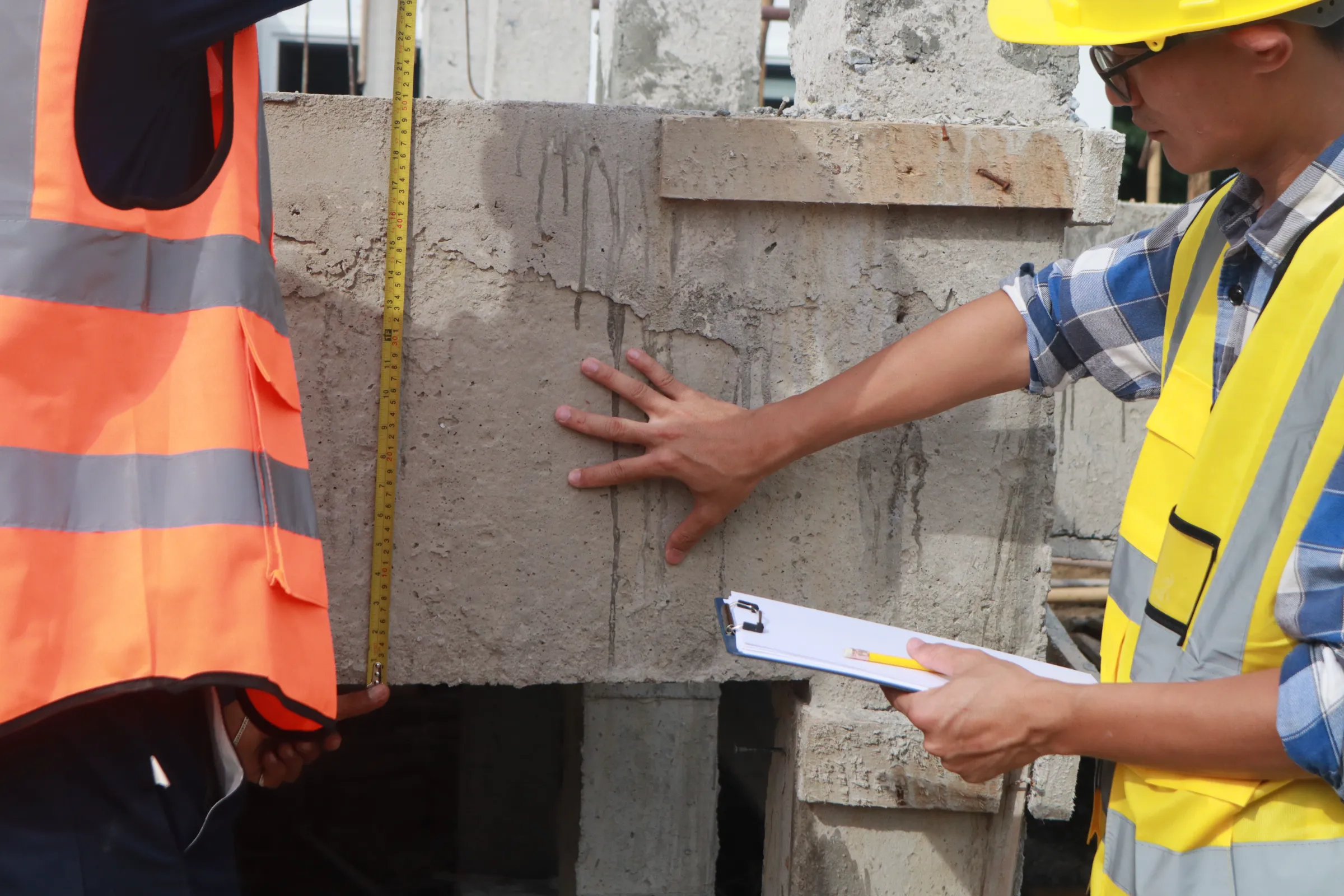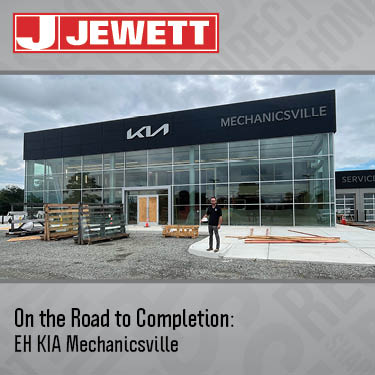Navigating Regulatory and Compliance Challenges in Commercial Construction: Jewett Construction’s Proactive Approach
Commercial construction involves more than engineering expertise and architectural flair—it also demands adherence to a labyrinth of legal guidelines and regulatory codes. From municipal zoning ordinances to specialized requirements for certain industries, these layers of oversight can significantly impact the design, timeline, and budget of any build. At Jewett Construction, we leverage experience gained across multiple sectors to help clients navigate these challenges and emerge with compliant, community-supported projects. Below, we delve into common regulatory pitfalls and outline some of our strategies for addressing them efficiently.
1. Zoning and Land Use: The First Barrier
Zoning regulations dictate permissible uses for each plot of land, whether commercial, industrial, or mixed-use. Before any groundbreaking can commence, local boards or committees need assurance that the proposed facility aligns with these guidelines. If rezoning becomes essential, the process might involve neighborhood feedback sessions, appeals to city councils, or formal variance requests.
Jewett Construction initiates every project with a close examination of local zoning documents and overarching community plans. Identifying constraints—like building height limits or set-back distances—early on prevents time-consuming rework once the blueprints are in progress. By integrating these considerations into initial designs, we keep client goals realistic and regulatory obstacles minimal.
2. Understanding the Permit Maze
Building permits, electrical permits, mechanical permits—a commercial development often requires multiple approvals from different offices. Each application follows its own path, complete with unique documentation and timelines. Some areas offer online submission portals, while others call for in-person appointments.
To streamline this multi-layered process, Jewett Construction compiles complete, detailed packages of architectural drawings, load calculations, and code compliance evidence. This level of preparedness reduces back-and-forth and reassures local agencies that our projects maintain a high standard of quality and safety. Continual dialogue with municipal staff also helps us anticipate questions or potential objections, cutting down on red tape.
3. Environmental Considerations
In many jurisdictions, environmental regulations reflect broader aims of preserving natural habitats, safeguarding water resources, or minimizing pollution. Projects near sensitive zones—like wetlands or historically protected areas—could require detailed environmental impact studies. Oversights can bring steep fines or force the project to halt unexpectedly.
Jewett Construction partners with specialized consultants to survey ecological conditions. If corrective measures are needed—like implementing soil erosion controls or adjusting drainage for wetlands protection—we factor these into the design from the outset. Although these additions can extend the schedule, proactive alignment with environmental guidelines helps us avert expensive and reputation-damaging conflicts later.
4. Industry-Specific Rules
Certain businesses confront extra compliance pressures based on their sector. A food-processing facility, for instance, could be subject to strict hygiene codes, while auto dealerships might contend with disposal regulations for hazardous materials. Retail centers in dense urban districts might need special clearances for signage, crowd capacity, or parking layout.
Drawing from broad experience in various domains, Jewett Construction collaborates closely with clients and experts to ensure each build meets both general building codes and specialized industry mandates. This comprehensive perspective reduces the chance of discovering late-stage, expensive fixes if someone uncovers a regulatory mismatch mid-construction.
5. Safety and Accessibility Requirements
Construction codes incorporate multiple layers of occupant safety—fire exits, structural resilience, ventilation, and more. Additionally, laws like the Americans with Disabilities Act (ADA) in the U.S. guarantee equal building access. Deviations can trigger delays, fines, and forced modifications.
Rather than viewing these rules as obstacles, Jewett Construction integrates accessibility and safety from the start, ensuring that design elements (e.g., ramps, restroom layouts, corridor widths) comply immediately. Our team also stays current on evolving requirements, so any emerging provisions are considered early, avoiding last-minute overhauls.
6. Fire & Life Safety Protocols
Fire prevention goes beyond installing sprinklers or alarms. It can entail special materials with rated flame resistance, exhaust pathways for kitchens, or emergency lighting in hallways. Local fire departments often inspect plans and visit sites to confirm compliance before allowing occupancy.
Jewett Construction’s experience includes liaising with fire marshals to clarify design needs and schedule walk-throughs. Should a modification—like adding additional fire barriers—become necessary, we respond quickly, weaving it into the project plan so the overall timeline remains intact. This forward-thinking approach ensures that critical life-safety infrastructure is never treated as an afterthought.
7. Historic District Guidelines
In neighborhoods with architectural heritage, renovations or new builds may need approval from historical commissions. Whether matching existing façades or preserving certain design motifs, owners often find these extra demands can prolong planning. Yet, meeting these guidelines can also enhance the building’s integration with the local character and foster community goodwill.
Jewett Construction seeks solutions that reconcile both functional needs and heritage values. By engaging local historical experts early, we adapt designs appropriately. The result can be a modern facility that pays homage to the area’s distinct aesthetic, earning broader community acceptance.
8. Labor and Wage Mandates
Regulations around labor can also influence how a commercial construction site operates. Prevailing wage laws or union agreements may dictate pay scales, labor hours, or working conditions. Non-compliance risks project shutdowns, financial penalties, and tarnished local relations.
Jewett Construction proactively clarifies labor requirements prior to signing contracts with subcontractors. By establishing fair pay scales and safe working environments, we help foster a productive site culture. Solid cooperation with unions and labor authorities reduces disputes and keeps the project running smoothly.
9. Incentives and Economic Zones
Some commercial developments might be eligible for tax incentives or fast-track permitting if they build in designated economic development zones or meet certain sustainability benchmarks. While applying for these perks adds complexity, they can significantly lower project expenses or expedite approvals.
Jewett Construction assists clients in identifying any potential benefits and guiding them through the documentation or design changes needed to qualify. Melding regulatory compliance with these incentives can lead to more favorable cost structures and potentially speedier timelines.
10. Addressing Public Concerns
Larger commercial projects often draw attention from neighbors, local businesses, and civic groups, leading to public hearings or open forums. These sessions help communities weigh in on traffic impacts, noise levels, or architectural harmony with surrounding structures. Skipping this step can invite resistance, protests, or even legal blockades.
Jewett Construction promotes transparency by inviting community input early. Through architectural renderings, traffic studies, or environmental assessments, we illustrate the proposed project’s benefits. When concerns arise, we discuss modifications that ease community unease—perhaps adjusting delivery schedules or adding landscaping buffers—while preserving core project objectives.
11. Proactive Conflict Resolution
Conflicts—whether they’re about property lines, easements, or code interpretations—occasionally emerge despite best efforts. Jewett Construction addresses these disputes by presenting thorough documentation, clarifying applicable regulations, and working cooperatively with relevant stakeholders or mediators.
This conciliatory stance often resolves issues without escalating into formal complaints or lawsuits. Having complete paperwork—detailing agreements, approvals, and consistent adherence to code—underscores our clients’ commitment to fair, lawful development.
12. The Value of Specialists and Legal Counsel
For projects with intricate compliance needs—like industrial plants handling hazardous substances or structures with cutting-edge technologies—specialist counsel or engineering advisors may be indispensable. These professionals interpret complex codes, provide necessary certifications, and communicate with agencies on the owner’s behalf.
Jewett Construction collaborates with a network of attorneys and technical experts, ensuring our clients have access to specialized knowledge for every phase. While hiring these experts carries an upfront cost, avoiding fines, delays, or forced redesigns saves both money and headaches over the project’s duration.
13. Maintaining Detailed Records
Comprehensive documentation underpins a successful regulatory experience. Permits, inspection reports, design changes, and correspondence should be consolidated in an organized system. This practice benefits not only immediate compliance checks but also future additions or renovations when re-verifying historical approvals and specifications.
Jewett Construction centralizes these records so that our team—and the client—can retrieve them quickly. If disputes surface or audits occur, a well-documented trail showcases the project’s track record of thorough due diligence.
14. Anticipating Code Updates
Building and environmental codes evolve in response to technological advancements, safety insights, and environmental shifts. By staying abreast of these changes—through professional associations, code seminars, and regulator partnerships—Jewett Construction can alert clients early if an upcoming rule might affect their project.
This foresight can avoid last-minute construction reworks or forced retrofits down the line. It can also unlock possibilities for incentives or certifications if a client chooses to adopt advanced environmental or energy standards earlier than required.
15. Conclusion: Turning Compliance into a Cornerstone of Success
While commercial construction regulations can seem extensive and occasionally burdensome, they protect both public welfare and long-term sustainability. By weaving compliance into our project workflow from the earliest planning stages, Jewett Construction delivers seamless, legally sound builds ready for occupant use.
Proactive zoning checks, thorough permit applications, specialized industry compliance, and open public engagement are integral parts of our process. With the proper guidance and a structured approach to documentation and communication, these regulatory layers become manageable steps rather than daunting roadblocks. If you’re planning a commercial project and want an experienced partner to navigate codes, permits, and stakeholder expectations, contact Jewett Construction. Our track record ensures you’ll open your doors with full confidence—on schedule, on budget, and on the right side of every regulation.








